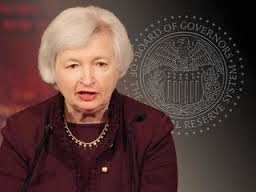
Academia Finally Sounding Alarm
As stocks set new records each month even other academic economists are starting to realize that not only is the Federal Reserve behind the curve, but that they are part of the rising risk concerns that are building in the financial system, and their failure to take responsibility for valuations that are 10% over-valued even on the most optimistic valuations, is alarming given the past bubbles and the damage that has occurred through excessively low interest rates providing far too much liquidity in the system.
Far Too Much Liquidity in the Financial System

Read More >>>Â The Fed Will Raise Rates in March 2015
Make no mistake with QE still going on, and a 25 basis points fed funds rate, combined with Japan, China, England and the ECB all providing loads of liquidity to the financial system, risk taking is off the charts, valuations are bubbly in many markets, and the entire financial system is setting itself up for another massive, deleveraging crash once again.Â

There is just too much liquidity in the financial system, and the US and England are the two economies best able to start reducing overall liquidity on a global basis, the UK with a hot real estate market, and the US with a hot job market and overheated stock market.Â

The point is that there is too much systemic risk right now and it is heading in the wrong direction given the fact that Britain and the United States are both performing far too well to continue to have recession era loose monetary policies. It might make sense in Japan and Europe but when you have even well performing economies with ‘recession era level’ of interest rates providing massive amounts of cheap liquidity to the financial system, no wonder we have so many bubbles in bonds and stocks.
Read More >>>Â The Oil Market QE Premium Is Coming out of Price
Don`t Be Fooled by the Lag Effect

The financial markets are not acting and trading normally, trust me I have seen many market cycles, and there is more liquidity in the financial system than there was in the credit bubble of 2006, this means things are out of hand once again, and the Fed needs to start soaking up this liquidity, and talking much more hawkish, just to ensure two-way markets, as right now there are far too many one-sided, all-in markets with ‘zero perceived risk’, and therein lies the risk problem.

